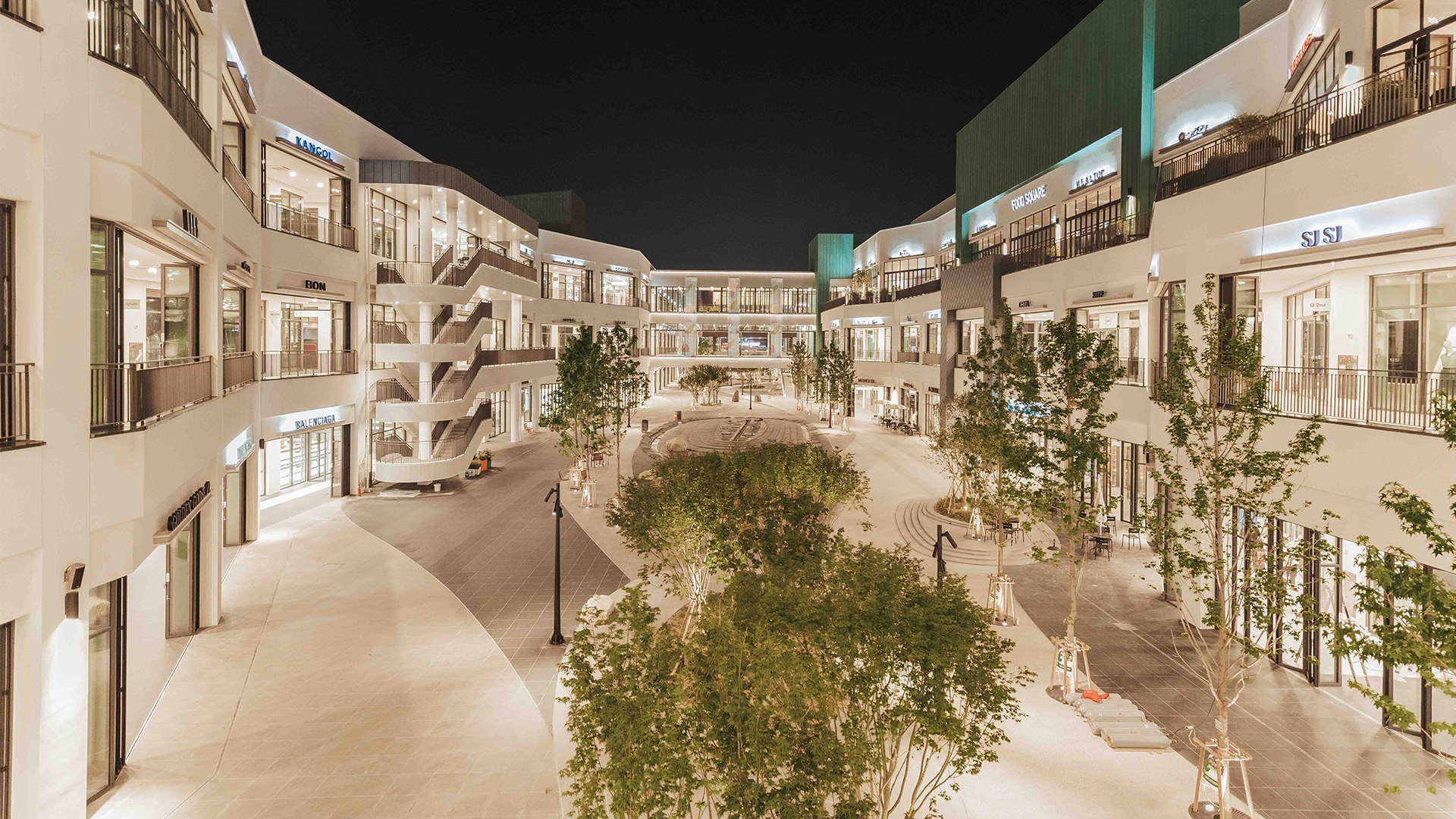
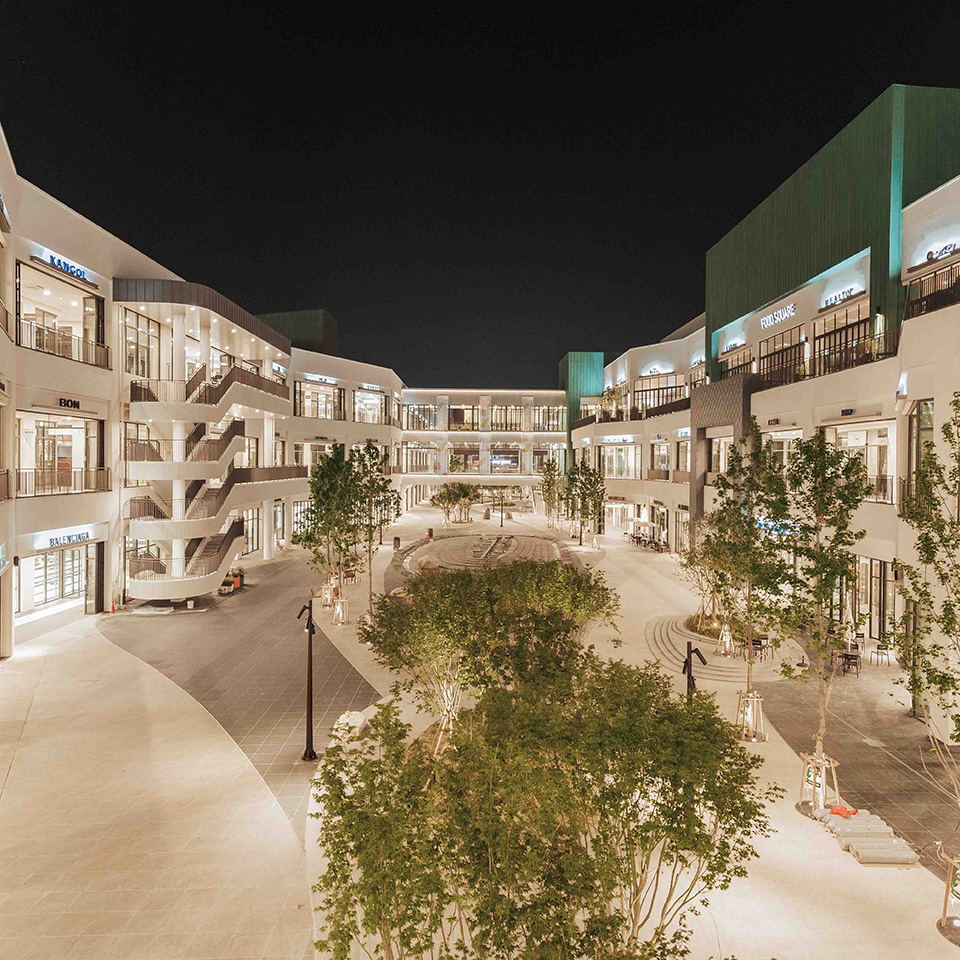


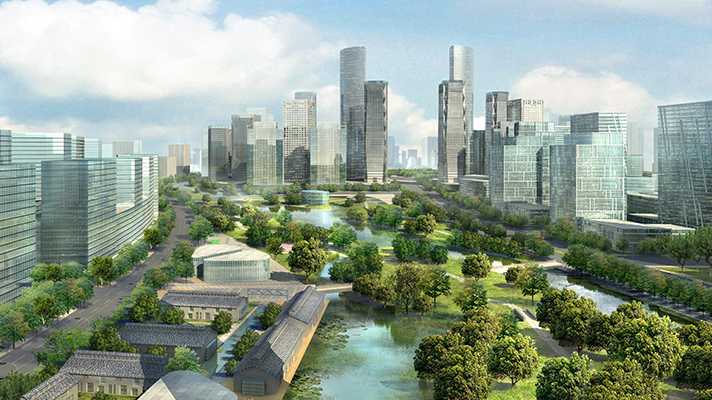
What comes to your mind when you think about a building forest? It would probably be buildings so densely constructed you’d have nothing to look around, a grey urban landscape. But the building forest these days adds on a touch of refreshing vibe with lots of green, thanks to the artificial ground greening technology implemented onto apartments and buildings. Artificial ground refers to a floor plate artificially created by putting dirt on top of a structure. Examples of artificial ground would be underground parking lot or rooftops. Artificial ground greening technology is a technology that literally creates a green land by utilizing multi-layer planting method after creating greenery on an artificial ground. The construction industry is making great use of artificial ground greening technology for urban aesthetics and to prevent environment pollution.
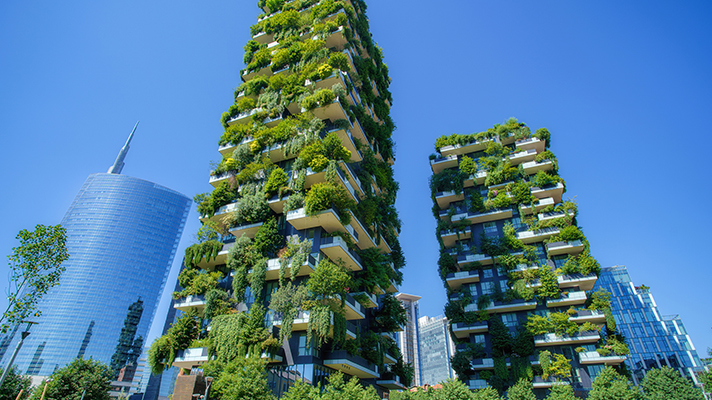
As there are more buildings than trees in a city, urban temperature tends to be higher than surrounding areas, and people regularly suffer from dryness and drought while in summer there is damage caused by focused rainfall. As urbanization takes place, green space is reduced; to salvage the health of the Earth, certain parts are regulated by law to be used for landscape purposes when constructing a building. The purpose of artificial ground greening technology is to revive the disappearing nature caused by urbanization. When there is not enough space for a park or apartment landscaping, rooftops, underground parking lot, etc. are used to create greenery, including wall greening in the form of a vertical garden. It helps in utilizing urban area and resolving urban environment problems.
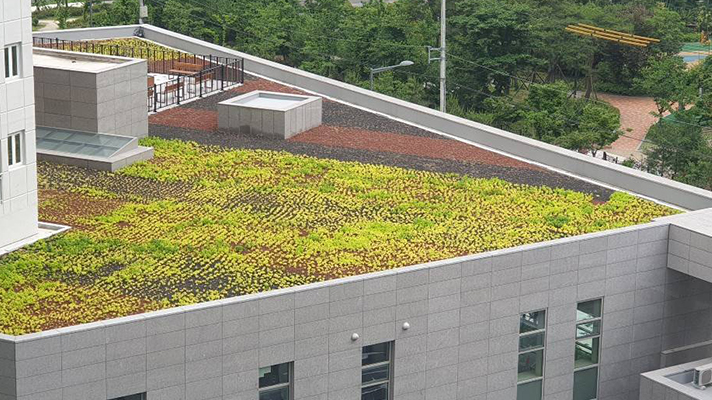
Artificial ground greening technology helps in reducing microdust. Wall greening utilizing a vertical garden can reduce microdust if air purifying plants are used while summertime also reducing the surface and indoor temperature of a building, effectively alleviating the urban heat island phenomenon. Heat island is a phenomenon where the temperature of urban center is higher than those of the regions surrounding the city. If there are a lot of asphalt or concrete buildings, the area that absorbs solar energy also increases, thereby increasing the urban ground surface temperature. As there is less green space as you get near the city center, the city center is more prone to increase in temperature and thus easier to become the heat island. Setting up an artificial ground greenery in such an area can block/absorb the sunlight energy and reduce urban center temperature.
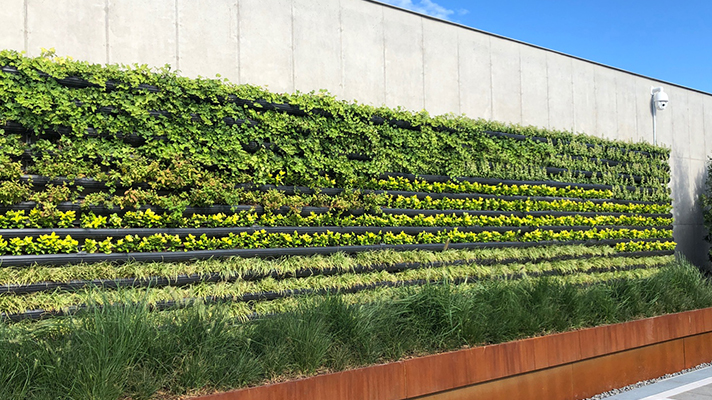
Let’s look further into the artificial ground greening technology, which vitalizes cities. It can be largely categorized into wall greening technology and rooftop greening technology. Wall greening and rooftop greening are getting much attention as urban center greening measures. As mentioned above, they can reduce microdust, alleviate heat islands, and enhance landscapes. The wall greening technology allows plants to grow on walls. It is further categorized depending on the plant types and installation methods. In the past, plants like ivy covered the buildings, but these days on the construction sites, plants are grown on a module soil for a certain period, then the modules themselves are installed on the wall.
This method makes installation easy and overcomes spatial limitations. It’s not only beautiful to look at but at certain intervals allows automatic watering, making maintenance convenient. Last year, Hyundai Engineering implemented wall greening technology at the Genesis Suji in Suji, Gyeonggi-do. A whole wall of the building was turned green to bring out the refreshing nature while also creating a beautiful space.
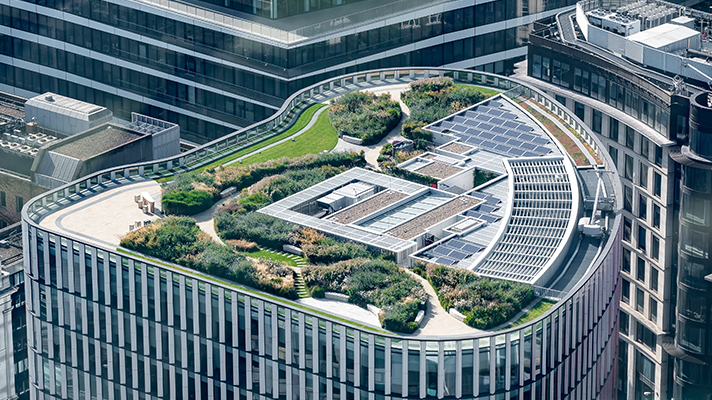
Rooftop greening is a technology that turns rooftops into greenery. As greenery is created on rooftops, it is difficult to maintain it regularly. For such reason, low-maintenance plants that grow well even in a barren environment such as Big blue lilyturf, orange stonecrop, ayegreen, and stone crop are selected for planting. Lightweight soil is also used so that the substructure does not go through issues caused by the weight of plants and soil. The lightweight soil is so light that it can float by wind like snowflakes, but contains nutrients for the plants, making it perfect to be used for rooftop greening. Mats growing vegetation from medium (liquid or solid that contains nutrients that help grow plant cells or organs) are also used; in barren regions, storage-type vegetation blocks are installed, which can store water.
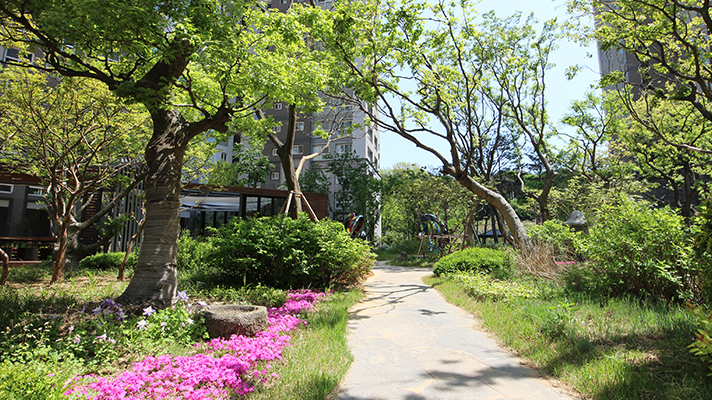
Hyundai Engineering has outstanding artificial ground greening technology. Hillstate Gwangyo, constructed by Hyundai Engineering, won the grand prize, the Environment Minister’s Award, at the ‘19th Nature Environment Awards’ in 2019. The ecological stream that implements eco-friendly waterproofing method was created to form an environment for aquatic plants. Water quality was also purified by planting various types of waterside and aquatic vegetation such as common reed, bunchflower, cattail, etc. Environments for insets and birds were also created to induce residents’ observation learning. They were honored with such a prize by receiving great reviews on all evaluation criterion including ecological diversity, naturality, resource cycling, etc.
Hillstate Gwangyo is consisted of 6 apartments of 49th floor upwards and 3 floors underground, including 928 households, and 2 office-tel complexes including 172 households, which amounts to a total plottage of 50,957㎡ (approximately 15,415 pyeong) of which the landscaping area takes up 25,852㎡ (approximately 7,820 pyeong); a high greenery ratio of about 50.73%. It was evaluated to have created a residential complex where Gwangyo Mountain and Woncheon Reservoir meet, so that natural environment and residents’ lives are harmonized well.
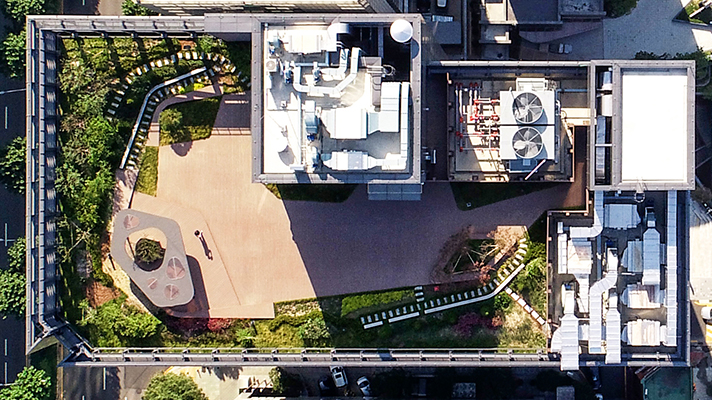
Gangnam N Tower, which won the Environment Minister’s Award at the 2019 Artificial Ground Greening Awards, is also a case that displays Hyundai Engineering’s artificial ground greening technology. Ecological base was prepared for flora and fauna on the rooftop with terrestrial biotope and sky garden while air quality and humidity were improved with indoor landscaping in the underground lobby. A huge public open area was created above ground for citizens’ free use. This place is distinct in the multi-layer structure greenery that blends well with surrounding topography; it boasts a wide urban garden which is rare in Gangnam. Pedestrian convenience was also considered. Freeze protection heating lines were installed on all stairs and slope ways to acquire pedestrian safety while slopes were designed and created without steps so that it’s accessible to everyone.
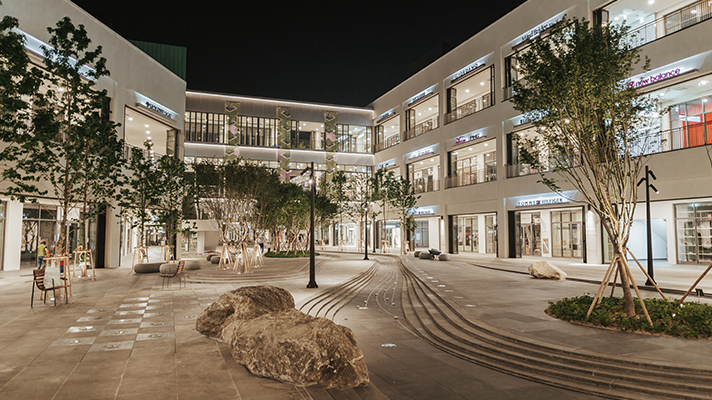
At the Daejeon Hyundai Premium Outlet, you can check out Hyundai Engineering’s rooftop garden and hydroponics facility. The building was divided to create an exterior space for wind passage. With the wind passage, building energy reduction can be achieved by having the natural wind cool the heat created from industrial areas. Each floor of the building was also transformed to plant trees on ground, terrace, and rooftop to create a refreshing, unique exterior space. 38% of the ground pavement area was finished with water permeability blocks to enhance rainwater undercurrent effect while greenery was designed to be lower than the sidewalk so that rainwater falling on greenery could be induced to flow slowly.
The undercurrent designed along the exterior space implemented various hydroponic facilities to reduce microdust and alleviate the heat island. Daejeon Hyundai Premium Outlet won the excellence award, the Artificial Ground Association President Award, at the 2020 Artificial Ground Greening Awards. It was recognized as an exemplary case where the artificial ground greening and the rooftop section greening are well harmonized. It provides a refreshing eco-friendly exterior space to the users by weaving nature into the urban center well.
So far, we’ve looked into the artificial ground greening technology that helps in resolving urban environment issues. It was evident that the technology considered the urban characteristic of having many buildings compared to its total floor area. It will feel a lot familiar to observe greenery created on walls, rooftops, and inside the buildings. Buildings with the artificial ground greening technology will be built more in the future in line with the eco-friendly trend. Hyundai Engineering will continue to participate in creating urban green forests.